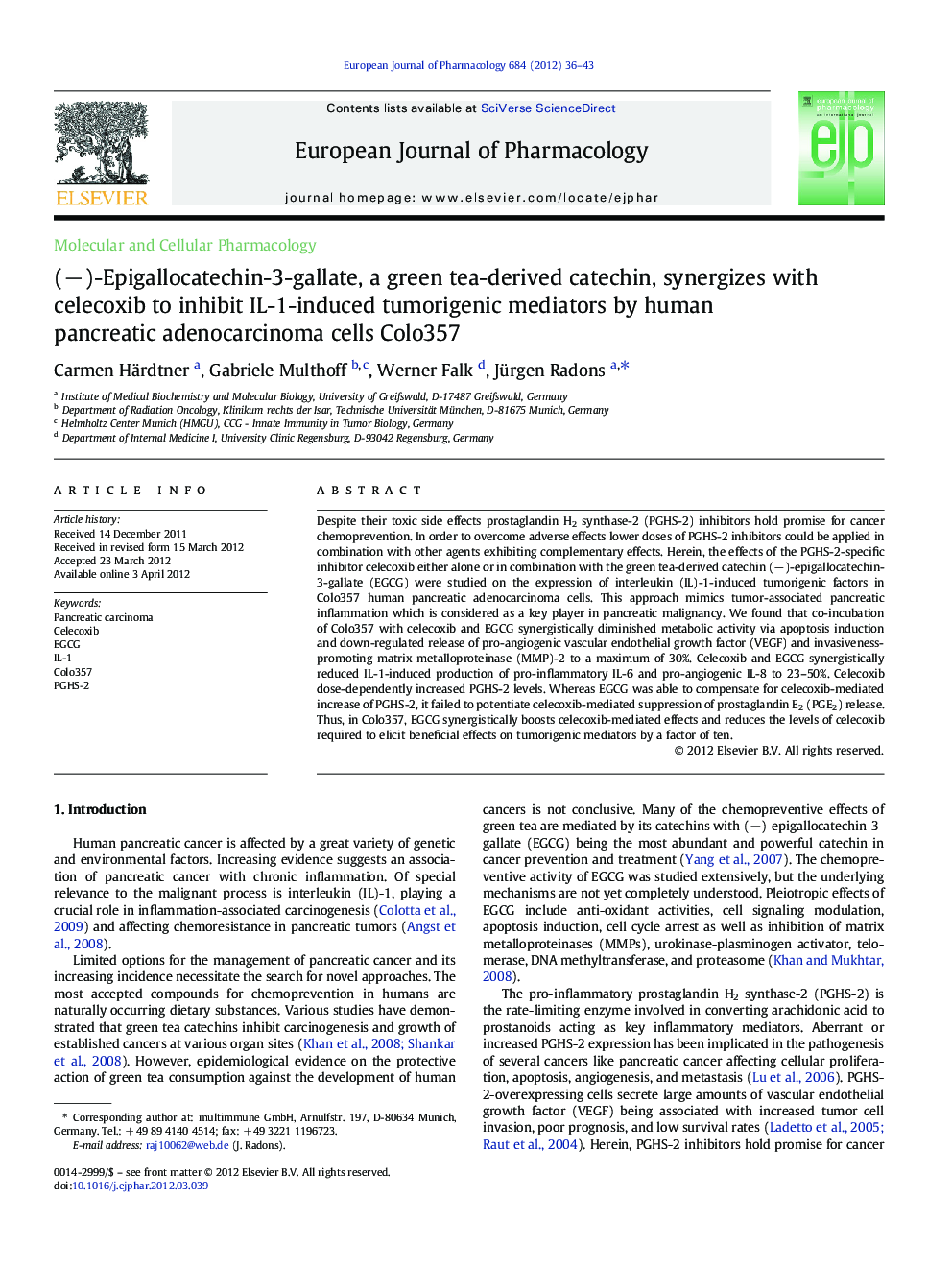| Article ID | Journal | Published Year | Pages | File Type |
|---|---|---|---|---|
| 5829541 | European Journal of Pharmacology | 2012 | 8 Pages |
Despite their toxic side effects prostaglandin H2 synthase-2 (PGHS-2) inhibitors hold promise for cancer chemoprevention. In order to overcome adverse effects lower doses of PGHS-2 inhibitors could be applied in combination with other agents exhibiting complementary effects. Herein, the effects of the PGHS-2-specific inhibitor celecoxib either alone or in combination with the green tea-derived catechin (â)-epigallocatechin-3-gallate (EGCG) were studied on the expression of interleukin (IL)-1-induced tumorigenic factors in Colo357 human pancreatic adenocarcinoma cells. This approach mimics tumor-associated pancreatic inflammation which is considered as a key player in pancreatic malignancy. We found that co-incubation of Colo357 with celecoxib and EGCG synergistically diminished metabolic activity via apoptosis induction and down-regulated release of pro-angiogenic vascular endothelial growth factor (VEGF) and invasiveness-promoting matrix metalloproteinase (MMP)-2 to a maximum of 30%. Celecoxib and EGCG synergistically reduced IL-1-induced production of pro-inflammatory IL-6 and pro-angiogenic IL-8 to 23-50%. Celecoxib dose-dependently increased PGHS-2 levels. Whereas EGCG was able to compensate for celecoxib-mediated increase of PGHS-2, it failed to potentiate celecoxib-mediated suppression of prostaglandin E2 (PGE2) release. Thus, in Colo357, EGCG synergistically boosts celecoxib-mediated effects and reduces the levels of celecoxib required to elicit beneficial effects on tumorigenic mediators by a factor of ten.
Graphical abstractDownload high-res image (214KB)Download full-size image
